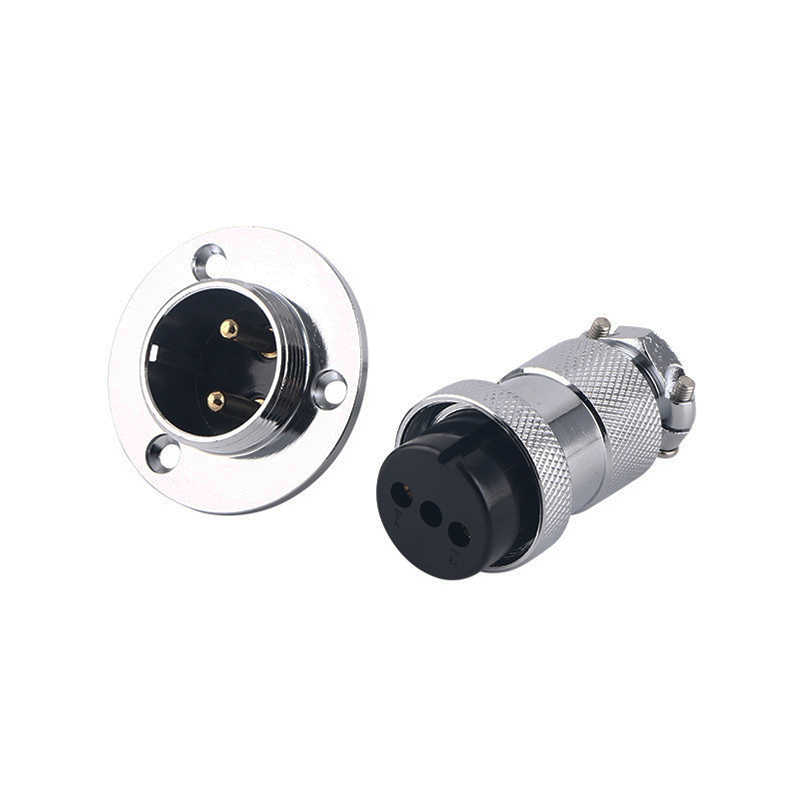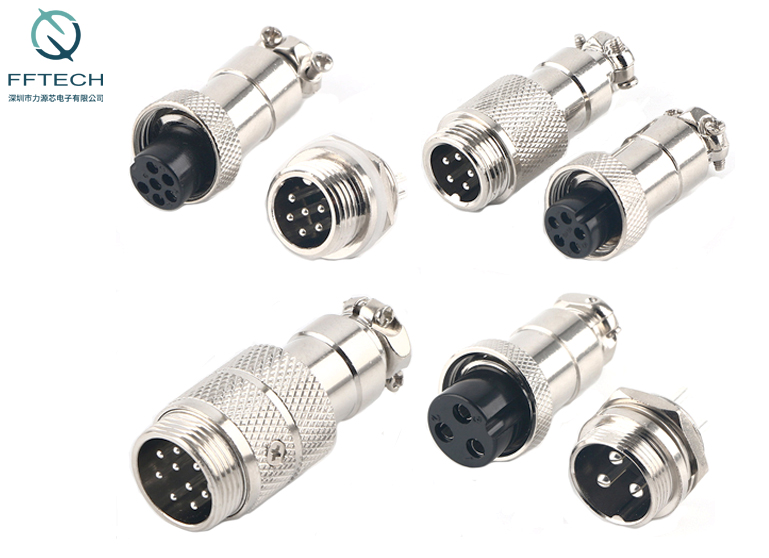Selection of Aviation Connectors
The most important requirement for aviation connectors is reliability. According to application requirements, connector products must be tested under specific conditions, mainly involving temperature testing and hardness testing of radiation materials. These issues are usually related to the plastic parts of the connector, whereas for the metal parts of the connector, testing is mostly about thermal expansion and contraction. However, connectors contain many different plastics, so it is necessary to examine the individual materials and how they interact. In addition, connectors should be evaluated according to size and weight to ensure high reliability of aviation connectors.
Data transfer rate is also a consideration for aerospace connectors. While fiber optic connectors are beneficial for most aerospace applications, different glass fiber variants with different radiation resistance are available and their suitability and power levels must be carefully checked.

Radiation affects the signal stability of aerospace connectors. In near-orbit and low-orbit applications, these are mostly low-velocity signals. Shielding is recommended, but will add weight and cost.
Connectors have a wide range of applications and many types. According to the requirements of different applications, the corresponding connector products can be selected to meet the requirements, but various application factors need to be considered.
1. When it comes to the application of wired connection, the important issue to consider for the connector is ease of use, such as the current carrying capacity of the USB connector, the signal density, and the reversible and non-directional connection through USB-C, on the contrary, the direction-dependent type The connector, which is keyed, allows only one way, which helps guide the user and prevents incorrect connections. However, locking connections usually provide better mechanical support and may require crimping.
2. Some applications require long-distance, high-speed and reliable connections. Generally, fiber optic connectors are widely used. There are three main types of fiber optic connections: singlemode, multimode, and plastic fiber. Multimode connections allow higher bandwidth, but are often compromised in long-distance applications due to their high dispersion and attenuation rates, making them ideal for shorter LAN-based connections.
3. Harsh operating conditions may require consideration when selecting connectors for aerospace and military applications. Some connectors have special EMI, ESD, vibration and/or moisture protection. A common decision for designers is whether a connector should be shielded. Shielded connectors can provide additional protection against unwanted radiation and local magnetic fields, but they are usually larger or more expensive than unshielded connectors. Some connectors even include damped contacts to help with high shock and high reliability applications, connections that need protection from outside moisture often include (or allow) sealing.
4. For high load applications, it is recommended to choose a connector product with a high current or voltage rating. Some connectors contain mixed-signal pins to support data and power connections. Typically, power pins have more current capacity and can be thicker, which helps avoid two separate power and data connectors.
Data transfer rate is also a consideration for aerospace connectors. While fiber optic connectors are beneficial for most aerospace applications, different glass fiber variants with different radiation resistance are available and their suitability and power levels must be carefully checked.

Radiation affects the signal stability of aerospace connectors. In near-orbit and low-orbit applications, these are mostly low-velocity signals. Shielding is recommended, but will add weight and cost.
Connectors have a wide range of applications and many types. According to the requirements of different applications, the corresponding connector products can be selected to meet the requirements, but various application factors need to be considered.
1. When it comes to the application of wired connection, the important issue to consider for the connector is ease of use, such as the current carrying capacity of the USB connector, the signal density, and the reversible and non-directional connection through USB-C, on the contrary, the direction-dependent type The connector, which is keyed, allows only one way, which helps guide the user and prevents incorrect connections. However, locking connections usually provide better mechanical support and may require crimping.
2. Some applications require long-distance, high-speed and reliable connections. Generally, fiber optic connectors are widely used. There are three main types of fiber optic connections: singlemode, multimode, and plastic fiber. Multimode connections allow higher bandwidth, but are often compromised in long-distance applications due to their high dispersion and attenuation rates, making them ideal for shorter LAN-based connections.
3. Harsh operating conditions may require consideration when selecting connectors for aerospace and military applications. Some connectors have special EMI, ESD, vibration and/or moisture protection. A common decision for designers is whether a connector should be shielded. Shielded connectors can provide additional protection against unwanted radiation and local magnetic fields, but they are usually larger or more expensive than unshielded connectors. Some connectors even include damped contacts to help with high shock and high reliability applications, connections that need protection from outside moisture often include (or allow) sealing.
4. For high load applications, it is recommended to choose a connector product with a high current or voltage rating. Some connectors contain mixed-signal pins to support data and power connections. Typically, power pins have more current capacity and can be thicker, which helps avoid two separate power and data connectors.

